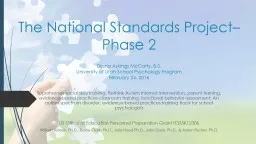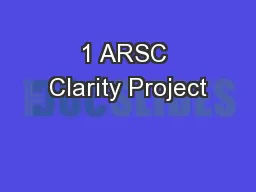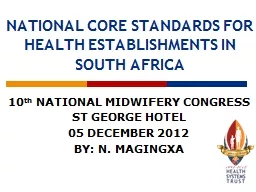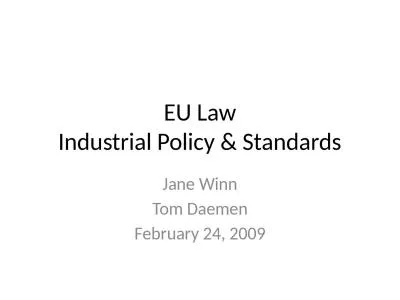PPT-The National Standards Project– Phase 2
Author : liane-varnes | Published Date : 2020-04-02
Superheroes social skills training Rethink Autism internet intervention parent training evidencebased practices classroom training functional behavior assessment
Presentation Embed Code
Download Presentation
Download Presentation The PPT/PDF document " The National Standards Project– Phase..." is the property of its rightful owner. Permission is granted to download and print the materials on this website for personal, non-commercial use only, and to display it on your personal computer provided you do not modify the materials and that you retain all copyright notices contained in the materials. By downloading content from our website, you accept the terms of this agreement.
The National Standards Project– Phase 2: Transcript
Download Rules Of Document
" The National Standards Project– Phase 2"The content belongs to its owner. You may download and print it for personal use, without modification, and keep all copyright notices. By downloading, you agree to these terms.
Related Documents





![[READ] - The Common Core Mathematics Companion: The Standards Decoded, Grades 6-8: What](https://thumbs.docslides.com/901027/read-the-common-core-mathematics-companion-the-standards-decoded-grades-6-8-what-they-say-what-they-mean-how-to-teach-them.jpg)
![[DOWNLOAD] - Grading From the Inside Out: Bringing Accuracy to Student Assessment Through](https://thumbs.docslides.com/901080/download-grading-from-the-inside-out-bringing-accuracy-to-student-assessment-through-a-standards-based-mindset-how-to-give-studen.jpg)
![[DOWNLOAD] - Subjects Matter, Second Edition: Exceeding Standards Through Powerful Content-Area](https://thumbs.docslides.com/901097/download-subjects-matter-second-edition-exceeding-standards-through-powerful-content-area-reading.jpg)
![[EBOOK] - A Teacher\'s Guide to Standards-Based Learning (An Instruction Manual for Adopting](https://thumbs.docslides.com/901141/ebook-a-teacher-s-guide-to-standards-based-learning-an-instruction-manual-for-adopting-standards-based-grading-curriculum-and.jpg)
![[READ] - Rigorous Curriculum Design: How to Create Curricular Units of Study That Align](https://thumbs.docslides.com/901746/read-rigorous-curriculum-design-how-to-create-curricular-units-of-study-that-align-standards-instruction-and-assessment.jpg)
![[READ] - National Certified Medical Assistant Exam Secrets Study Guide: NCCT Test Review](https://thumbs.docslides.com/902610/read-national-certified-medical-assistant-exam-secrets-study-guide-ncct-test-review-for-the-national-center-for-competency-tes.jpg)
![[READ] - TExES Science 7-12 (236) Secrets Study Guide: TExES Test Review for the Texas](https://thumbs.docslides.com/903069/read-texes-science-7-12-236-secrets-study-guide-texes-test-review-for-the-texas-examinations-of-educator-standards-secrets.jpg)
![[DOWNLOAD] - Master the Veterinary Technician National Exam (VTNE) (Peterson\'s Master](https://thumbs.docslides.com/903499/download-master-the-veterinary-technician-national-exam-vtne-peterson-s-master-the-veterinary-technician-national-exam.jpg)

